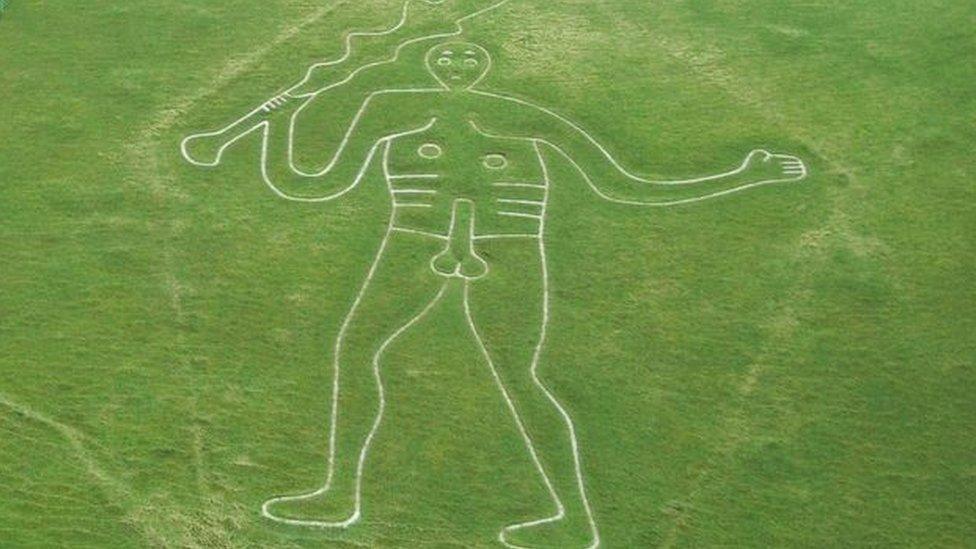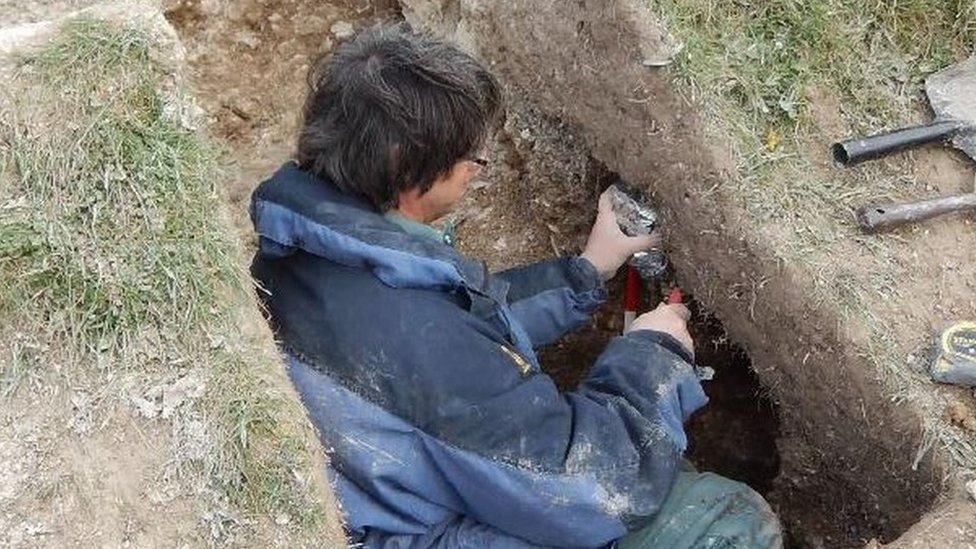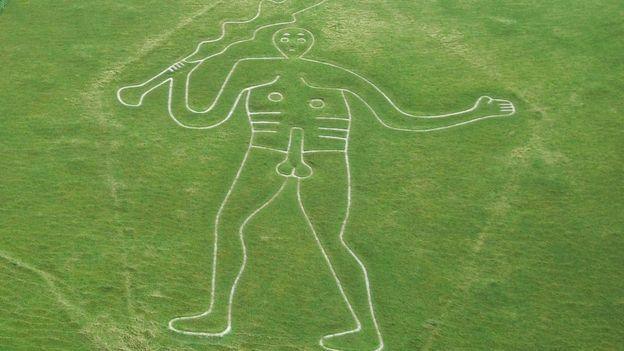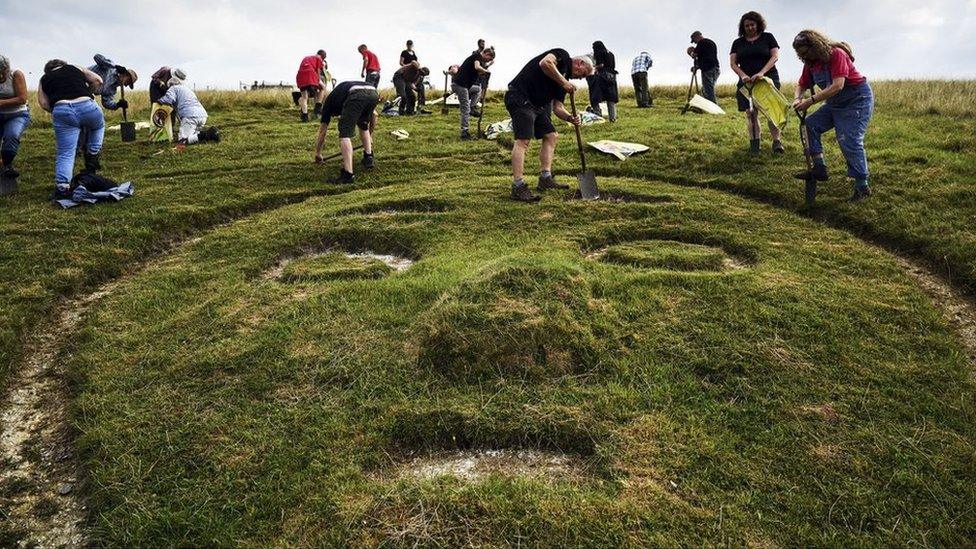Cerne Abbas Giant age revealed by scientists
- Published

Scientists analysed soil from the Cerne Abbas Giant over a 12-month period
Archaeologists believe an ancient naked figure sculpted into a chalk hillside was created during the late Saxon period.
Soil samples from the Cerne Abbas Giant were analysed by scientists over 12 months to reveal the landmark's age.
The research also sparked a new theory that the Dorset giant was forgotten for generations after it was first sculpted and then later rediscovered.
Geoarchaeologist Mike Allen said the age result was "not what was expected".
He said: "Everyone was wrong and that makes these results even more exciting."
Soil samples from the giant's elbows and feet were extracted in March 2020 but the results were delayed due to the coronavirus pandemic.

Snails introduced during medieval times, including Cernuella virgata (pictured), have been found at the site
In July, scientists said microscopic snails revealed the giant was unlikely to be prehistoric.
"Many archaeologists and historians thought he was prehistoric or post-medieval, but not medieval," said Mr Allen.
Scientists studied soil samples by using technology to show when individual grains of sand in the sediment were last exposed to sunlight.
Researchers said material taken from the deepest layer yielded a date range of AD700 to 1100, which suggested the giant was first made by late Saxons.
The Anglo-Saxon period lasted for 600 years, from 410 to 1066, before the middle ages.
But other samples suggested the giant was made at later dates of up to 1560, which left the archaeologists with a conundrum, due to the earliest documented record of the giant featuring in a church warden's account of repairing it in 1694.

Soil samples were taken from the giant's elbows and feet
National Trust senior archaeologist Martin Papworth said the science suggested the giant "could be medieval" but added surviving documents from Cerne Abbey, founded in AD987, "don't mention the giant".
"In the 16th Century it's as if the giant's not there, and John Norden's survey of 1617 makes no mention of him," he added.
Mr Papworth's theory is that the giant may have been created in the late Saxon period, but then for some unknown reason was neglected for several hundred years and grassed over, before being rediscovered.
"That would explain why he doesn't appear in the abbey records or in Tudor surveys," he said.

Follow BBC South on Facebook, external, Twitter, external, or Instagram, external. Send your story ideas to south.newsonline@bbc.co.uk, external.
Related topics
- Published8 July 2020

- Published25 April 2020

- Published23 March 2020

- Published29 August 2019
